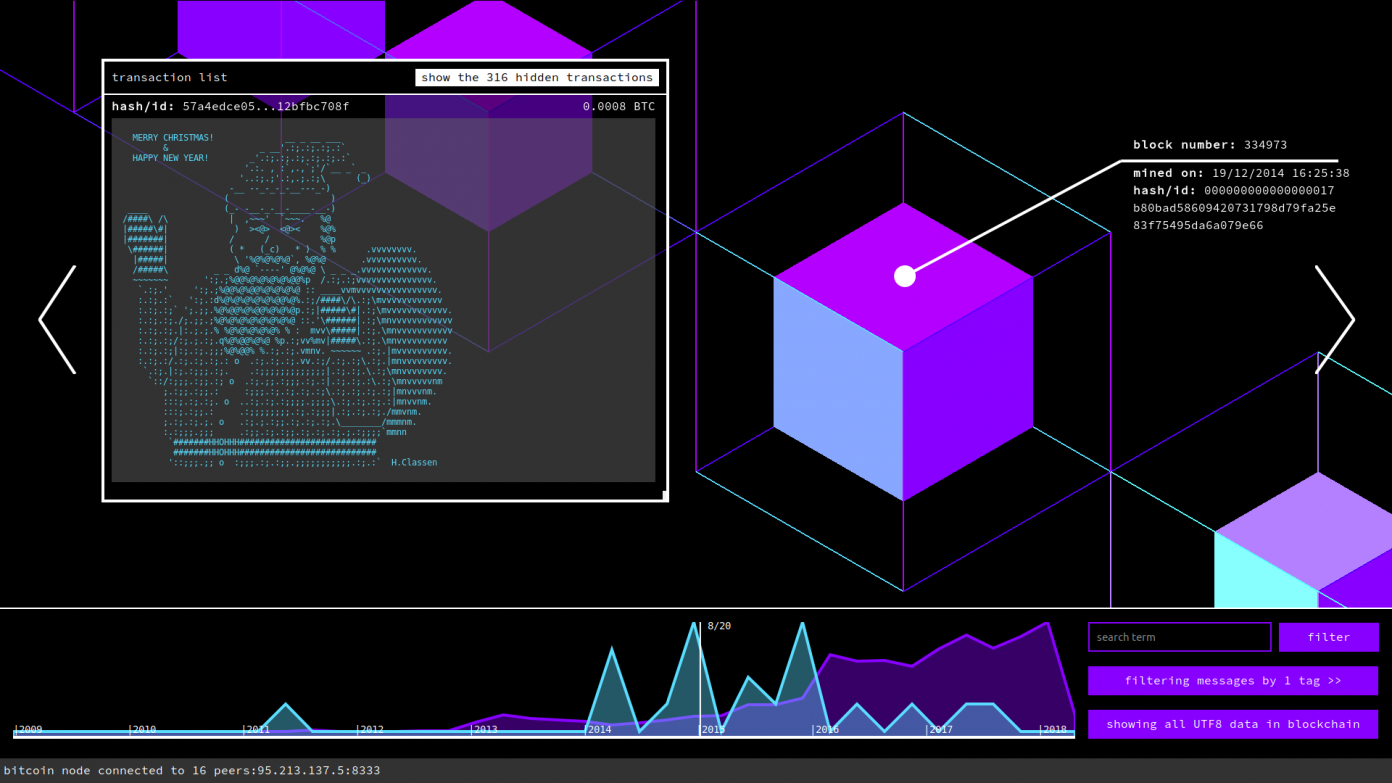
People have been hiding messages in the bitcoin blockchain ever since the genesis block was mined. While most aren’t as famous as Satoshi’s Times headline of January 3 2009, each one will live for as long as bitcoin does, testaments to mankind’s obsession with steganography, spam, and unorthodox marriage proposals.
Also read: No, There Isn’t Child Porn on the Bitcoin Blockchain
The Bitcoin Blockchain Is Riddled with Messages
There are six ways to encode messages in the bitcoin blockchain, using such fields as the coinbase parameter and OP_RETURN. Over the years, every single one of these has been used to encode cryptic messages, some frivolous, some practical, and some extremely dubious. For example, bitcoin miners have used this ability to signal support for protocol changes such as the acceptance of Segwit.

You don’t have to be running a bitcoin miner to encode your own messages in the blockchain for all eternity – or for as long as humanity exists, for even if bitcoin were to inconceivably die, copies of the blockchain would remain. With over 100,000 backups distributed around the world, someone’s bound to retain a copy. There are detailed guides to encoding your own messages in the blockchain. Alternatively, for those who don’t relish setting up a Bitcoin Core client, Eternity Wall does all the hard work to deliver “messages lasting forever”. It promises “Even if this site goes down or disappears, your message is guaranteed to persist [in the bitcoin blockchain] for generations to come.”
Memorable Messages Buried in the Blockchain
As Nic Carter recently pointed out, there are at least six marriage proposals embedded in the bitcoin blockchain. In keeping with tradition, all appear to have been posted by men. Whether their significant others ever saw the messages while idly parsing hexed blockchain data is unknown. These inscriptions – plus many more – can be found simply by typing the desired keyword or phrase into Blockchair’s blockchain explorer.

Predictably, adding profanities to the blockchain has proven more popular than marriage proposals. The N-word has appeared over 60 times to date, most of which surface in the bitcoin cash blockchain for some reason. The F-word appears over 1,000 times, around the same number of times as “Satoshi”. By default, messages that are encoded in the blockchain don’t stand out – the human eye isn’t programmed to decode hexadecimal – but a number of tools and projects have been developed to unshroud the mysteries that lie within the bitcoin ledger.
Messages from the Mines
A Florida design agency has created an interactive art installation for decoding blockchain messages and bringing them to life. Messages from the Mines reveals the “cryptic poems, ASCII art, signatures, eulogies and more” that form “a creative misuse of the Bitcoin transaction protocol, a form of digital graffiti…cultural artifacts forever embedded in one of the most contemporary digital technologies.”

Real world graffiti fades through time or is pressure washed into oblivion by killjoy municipal departments. But on the blockchain, every inscription, no matter how profound, political, or crude, remains forever, free from censorship, just as bitcoin was made to be.
Have you ever encoded a message in the bitcoin blockchain? Let us know in the comments section below.
Images courtesy of Shutterstock, Blockchair, and Messages from the Mines.
Need to calculate your bitcoin holdings? Check our tools section.
The post A Brief History of Hidden Messages in the Bitcoin Blockchain appeared first on Bitcoin News.
Powered by WPeMatico
